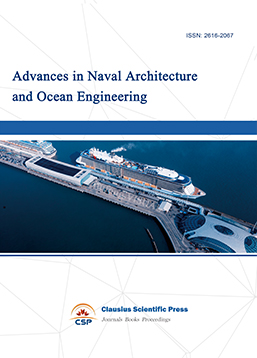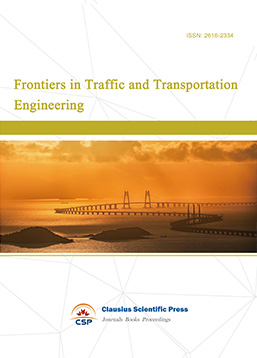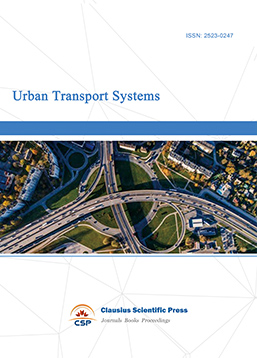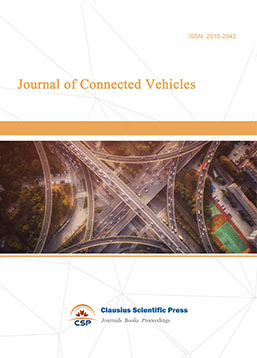THEORY OF ASSESSING ACCIDENT PROBABILITY IN INTELLIGENT TRANSPORT AND LOGISTICS SYSTEMS
DOI: 10.23977/jvits.2020.020101 | Downloads: 30 | Views: 5563
Author(s)
Sergey Lyapin 1, Yulia Rizaeva 1, Dmitry Kadasev 1, Irina Kadaseva 1
Affiliation(s)
1 FGBOU VO "Lipetsk State Technical University", 398055, st. Moscow, d. 30, Lipetsk, Russia
Corresponding Author
Sergey LyapinABSTRACT
The article justifies the necessity to develop Russia's national road transport network and integrate it into the world economic space in order to realize its transit potential in the system of Euro-Asian international transport corridors more effectively as well as to increase the volume of transport service exports. Introducing an intelligent transport and logistics system (ITLS) it is possible to ensure road safety which will increase economic efficiency and integrated safety of transport corridors because traffic accidents (TA) have a detrimental effect on the social and economic development of any country. Drivers of vehicles (Vs) can be informed as a group or individually about the risk of an accident and the need to change the speed or location of the vehicle on the road. It is suggested that the problem can be solved online by using the parametric identification of the ITLS elements and the neural network management of the classification and regulation process. The process of training the neural network and the principles of its operation are presented.
KEYWORDS
traffic accident, intelligent transport and logistics system, probability assessment, road safetyCITE THIS PAPER
Sergey Lyapin, Yulia Rizaeva, Dmitry Kadasev and Irina Kadaseva. THEORY OF ASSESSING ACCIDENT PROBABILITY IN INTELLIGENT TRANSPORT AND LOGISTICS SYSTEMS. Journal of Vehicle and Intelligent Transport System (2020) 2: 1-10. DOI: http://dx.doi.org/10.23977/jvits.2020.020101.
REFERENCES
[1] Volodin A, Prokofieva T and Shakhov O 2005 Transport strategy of Russia and the mechanism for managing its implementation Transport Newsletter №4 pp 6-15.
[2] Misharin A and Evseev O 2013 Updating the Transport Strategy of the Russian Federation for the period until 2030 Transport of the Russian Federation No. 2 (45) pp 4-13.
[3] Ibai Laсa, Ignacio (Iсaki) Olabarrieta, Manuel Vйlez, Javier Del Ser. On the imputation of missing data for road traffic forecasting: New insights and novel techniques // Transportation Research. Part C: Emerging Technologies. 2018. Vol. 90. Pp. 18–33.
[4] Bibri S.E. A foundational framework for smart sustainable city development: Theoretical, disciplinary, and discursive dimensions and their synergies. Sustainable Cities and Society, 2018, Vol. 38, Pp. 758–794.
[5] Road safety strategy in the Russian Federation for 2018-2024: Decree of the Government of the Russian Federation of January 8, 2018 No. 1-r
[6] Seliverstov S. A. & Seliverstov Ya. A. Nauchno-tekhnicheskiye vedomosti SPbGPU. Informatika. Telekommunikatsii. Upravleniye. – Sci. and Tech. Rep. of the Peter the Great St Petersburg Polytechnic Univ. Informatics. Telecommunications. Management, 2015, no. 2/3 (217/222), pp. 139–161.
[7] Komarov V and Garagan S 2012 Architecture and standardization of telematic and intelligent transport systems. foreign experience and domestic practice (Moscow: NTB "ENERGY")
[8] Zhankaziev S. 2016 Intelligent transport systems: textbook (Moscow: MADI)
[9] Sedov D and Timofeeva S 2017 Risks of road traffic accidents: technical responsibility of drivers and road services XXI century. Technosphere safety (Vol. 2.) No. 4 pp 78–85.
[10] ODM 218.4.005-2010 Recommendations for ensuring traffic safety on highways
[11] Katasonov M, Leskin A, Kochetkov A, Syroezhkina M, Schegoleva N and Zadvornov V 2017 A mathematical model for predicting road traffic accidents on a network of highways and in places where traffic accidents are concentrated Internet journal Naukovedenie 9(1)
[12] ODM 218.4.004-2009 Guidelines for the elimination and prevention of the occurrence of road accident concentration sites during the operation of roads
[13] ODM 218.6.009-2013 Methodological recommendations for assessing traffic safety in the design of roads
[14] Sysoev A, Kadasev D, Lyapin S, RizaevaYu and Khabibullina E 2018 Conceptual scheme of regional module for intelligent transportation and logistics system International Conference on Traffic and Transport Engineering pp139-146
[15] Illarionov V 1989 Examination of traffic accidents (Moscow Transport)
[16] Seliverstov Ya and Seliverstov S 2016 Use of GATLOSEMI class systems to anticipate the causes of accidents and adverse social outcomes in a “smart city” Scientific and Technical Journal of St. Petersburg State Polytechnical University. Computer science. Telecommunications. Control. №1 (236) pp 65-81
[17] Stolyarov V 2010 The theory of risk in the forensic examination of road traffic accidents (+ ABS) Saratov
[18] Nikishov A 2012 Intelligent neural network system for identifying the parameters of information-measuring devices of aircraft: abstract of thesis. ... candidate of technical sciences: 05.13.01 (Moscow)
[19] Lotfi Abdi, Faten Ben Abdallah, Aref Meddeb. In-vehicle augmented reality traffic information system: A new type of communication between driver and vehicle // Procedia Computer Science. 2015. No. 73. Pp. 242–249.
[20] Zmeu K, Markov N and Notkin B 2011 Predicting inverse neurocontrol of a position-tracking pneumatic actuator Intelligent Control Systems 3 (29) pp 104-117.
[21] Pristupa M and Smagin V 2013 Predictive control of the output of a non-stationary discrete system with restrictions on control Bulletin of Tomsk State University. Management, computer engineering and computer science No. 3 (24) pp 14-23.
| Downloads: | 58 |
|---|---|
| Visits: | 10825 |

 Download as PDF
Download as PDF


